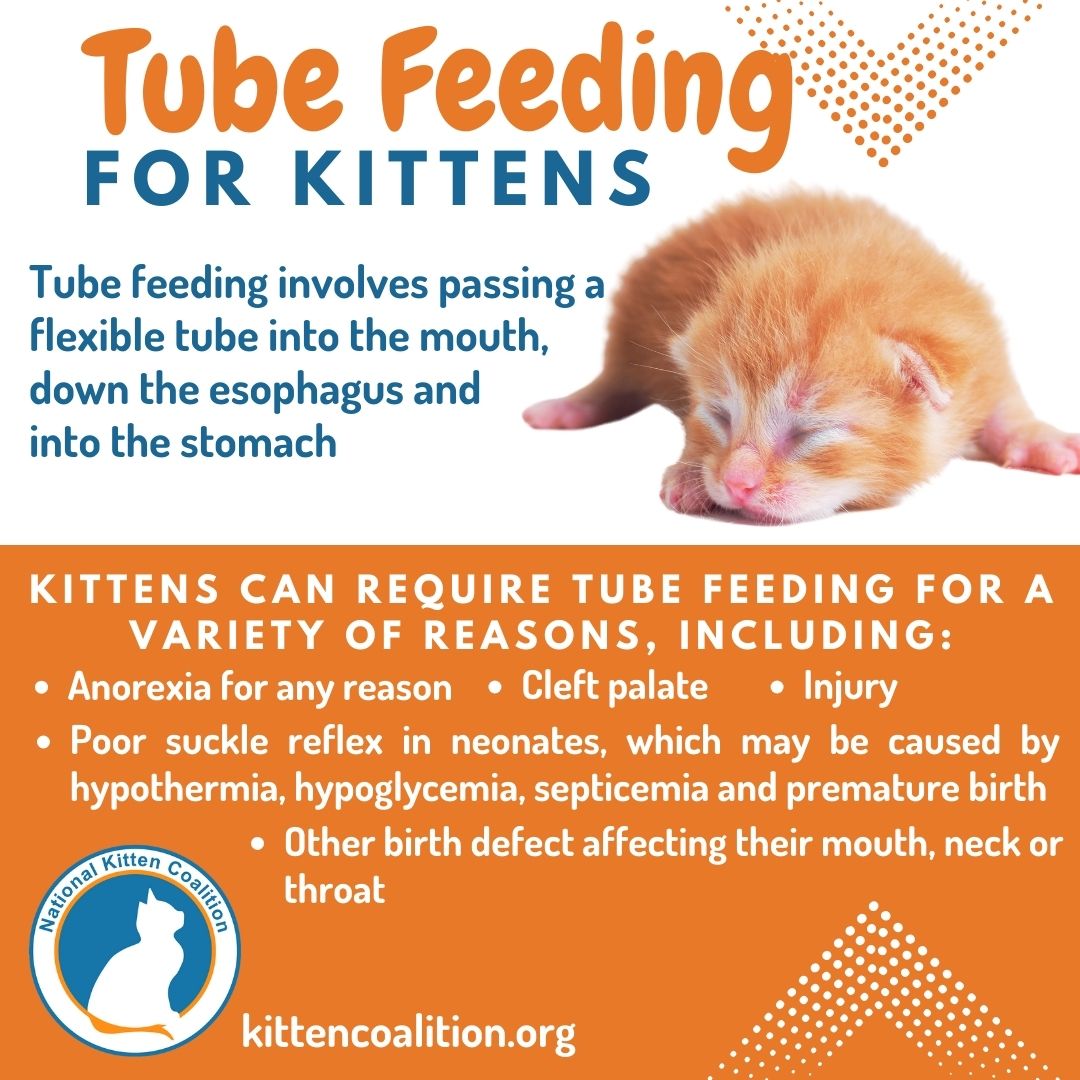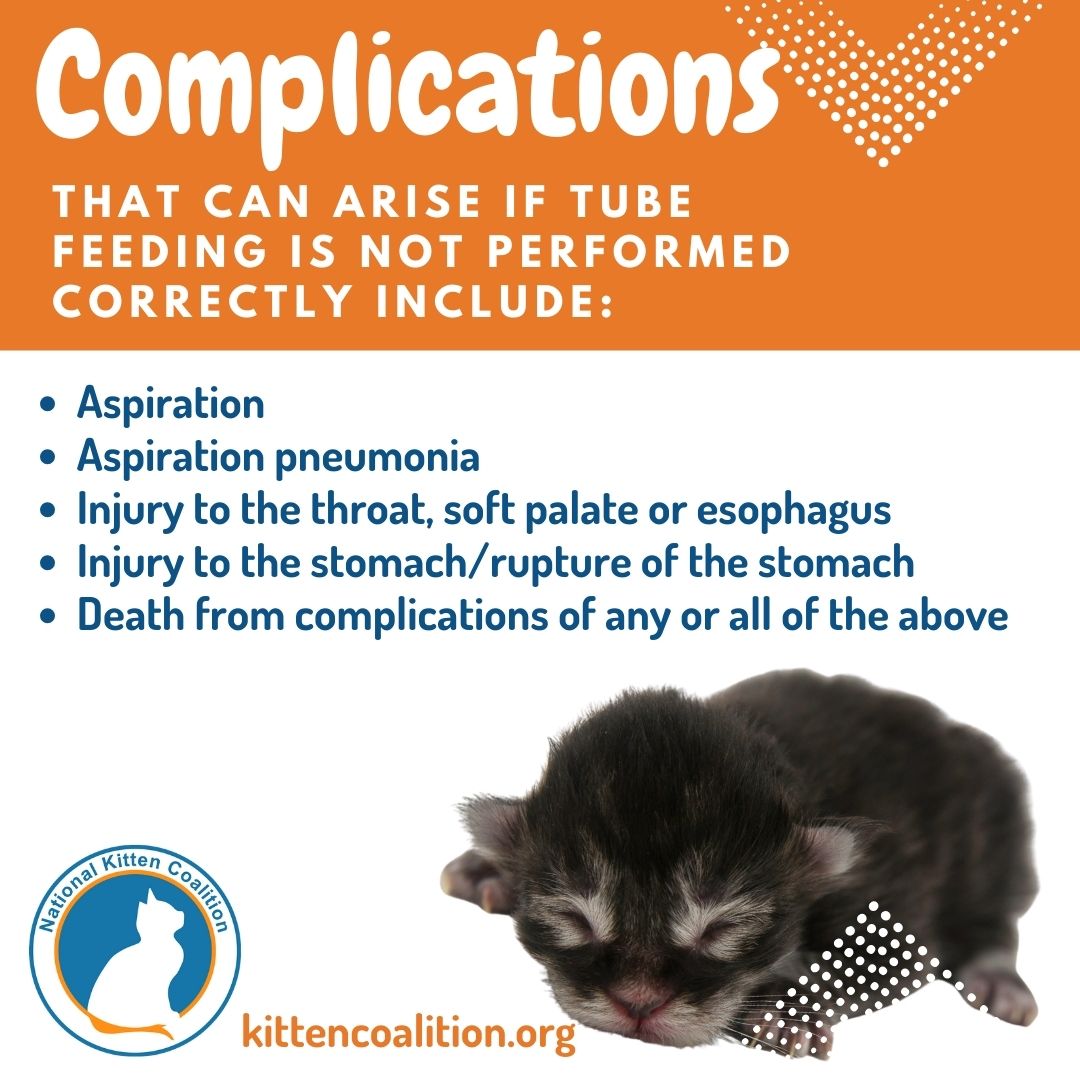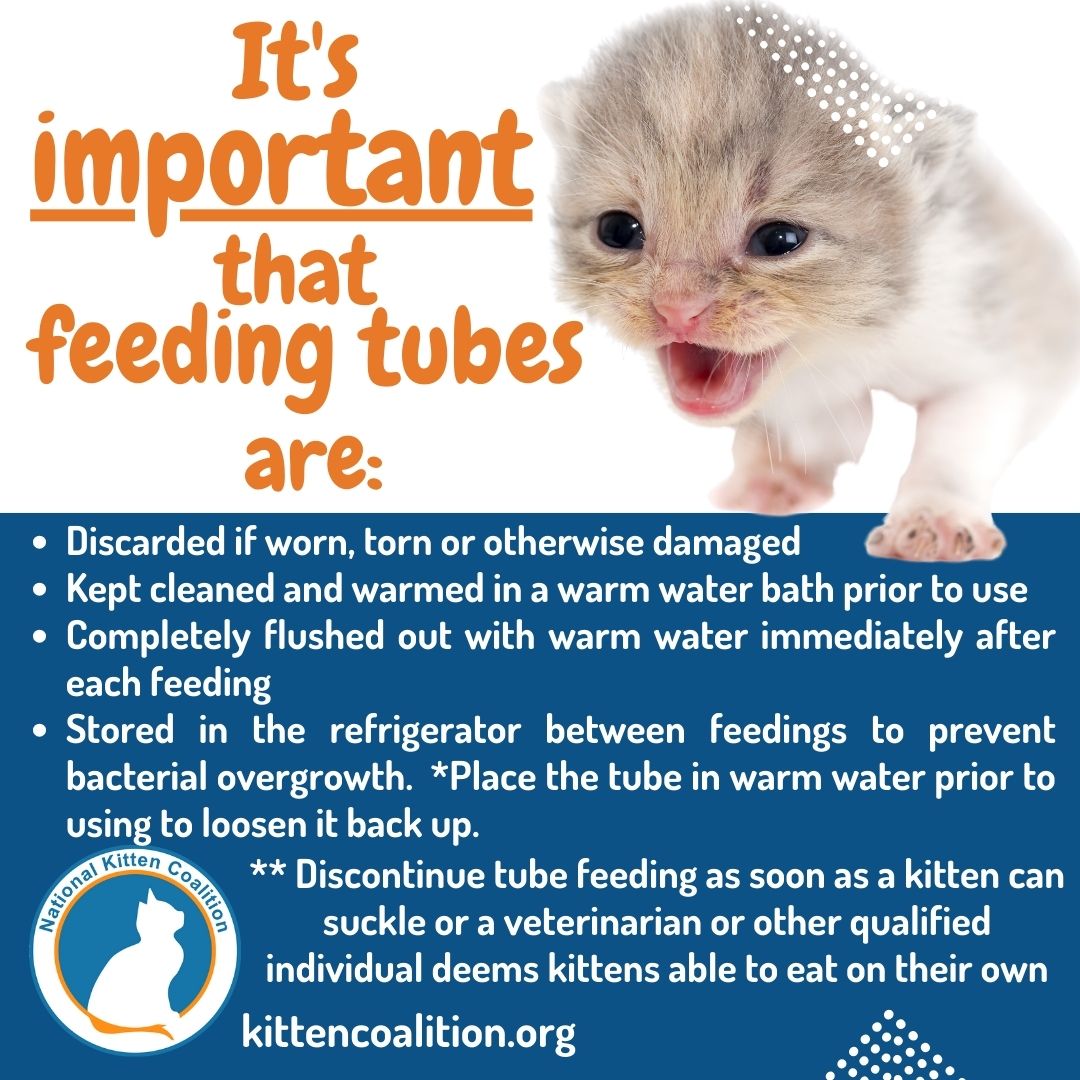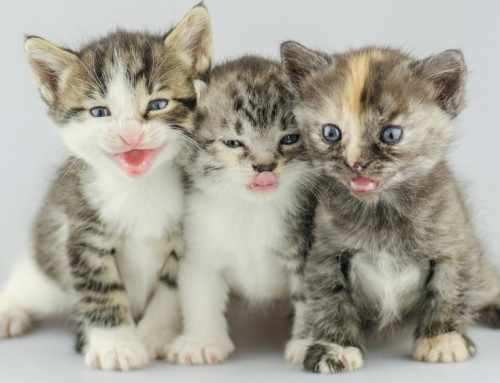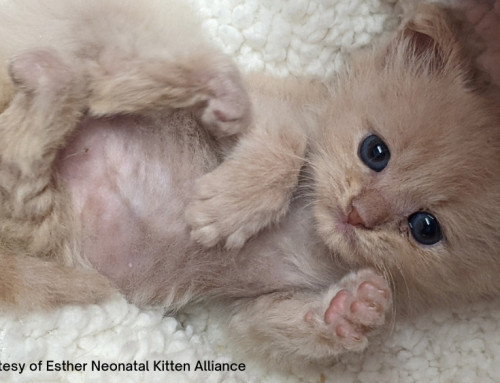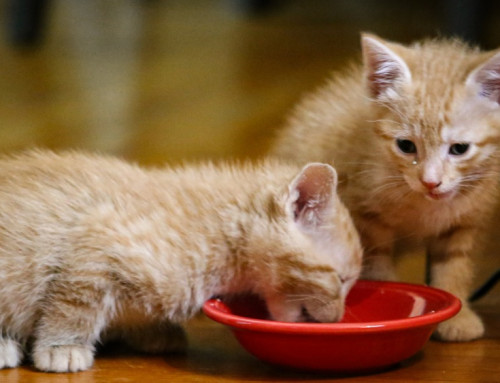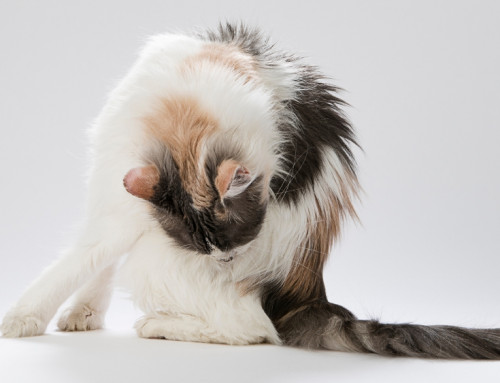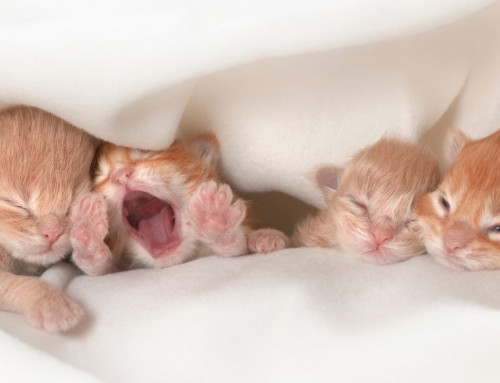Share this resource or email it to a friend!
What Is Tube Feeding for Kittens?
Tube feeding is a method of delivering nutrition to kittens who cannot or will not eat on their own. Tube feeding involves passing a flexible tube into the mouth, down the esophagus and into the stomach.
This method of feeding is most commonly used for neonatal kittens, whether orphaned or with a queen. Tube feeding can also be used for older kittens with some adjustments for safety once their teeth have erupted. When performed correctly, tube feeding can be a safe and effective method for feeding kittens.
Because tube feeding kittens is not recommended unless you have received proper in-person training from a veterinarian or other qualified individual, exact steps will not be outlined in this article. Do not rely solely on information or videos from the internet to tube feed kittens.
When Is Tube Feeding for Kittens Recommended?
Kittens can require tube feeding for a variety of reasons, including:
- Anorexia for any reason
- Poor suckle reflex in neonates, which may be caused by premature birth, hypothermia, hypoglycemia, dehydration and septicemia
- Cleft palate
- Other birth defect affecting their mouth, neck or throat
- Injury to lips, tongue or throat
Note: Never try to feed a hypothermic kitten. Kittens must be warmed to allow for proper digestion prior to feeding.
Tube feeding should be discontinued as soon as a kitten’s suckle reflex returns, or kittens are deemed able to eat on their own by a veterinarian or other qualified individual.
What Supplies Are Needed for Tube Feeding Kittens?
The following supplies are required for tube feeding kittens:
- Scale that weighs in grams
- Stomach capacity chart
- Sterile Feeding Tubes, typically in outside diameters of 3.5fr, 5fr or 8fr by 16” in length
- Syringes of appropriate size, typically 3 ml, 5 ml, 10ml
- Syringe of water
- Kitten milk replacer, such as Breeder’s Edge® Foster Care™ or PetAg KMR®
- Sharpie to mark the feeding tube
What Are Potential Complications when Tube Feeding Kittens?
When performed by a properly trained individual, tube feeding is a very safe procedure. Complications that can arise if tube feeding is not performed correctly include:
- Aspiration (fluid entering the airway or lungs)
- Aspiration pneumonia
- Injury to the throat, soft palate, esophagus
- Injury to the stomach/rupture of the stomach
- Death from complications of any or all of the above
How Are Feeding Tubes Cared For?
It is very important to be just as vigilant with cleanliness of feeding tubes as you are with bottles and nipples.
- Monitor that feeding tubes are intact prior to each use, and discard any tube that appears worn, torn or otherwise damaged.
- Use the freshest milk possible when tube feeding, and warm it in a warm water bath. Feeding tubes can be warmed in same warm water bath prior to use.
- Completely flush out feeding tubes with warm water immediately after each feeding, and store them in the refrigerator between feedings to inhibit bacterial growth.
Feeding tubes are inexpensive and while a new tube does not need to be used at each feeding, it is recommended that each feeding tube be used for only one individual kitten.
Most caregivers who raise bottle babies encounter at least one kitten that requires tube feeding at some point. Consider learning how to tube feed so that you are able to help a kitten in need. This important skill could make all the difference in a positive outcome.


